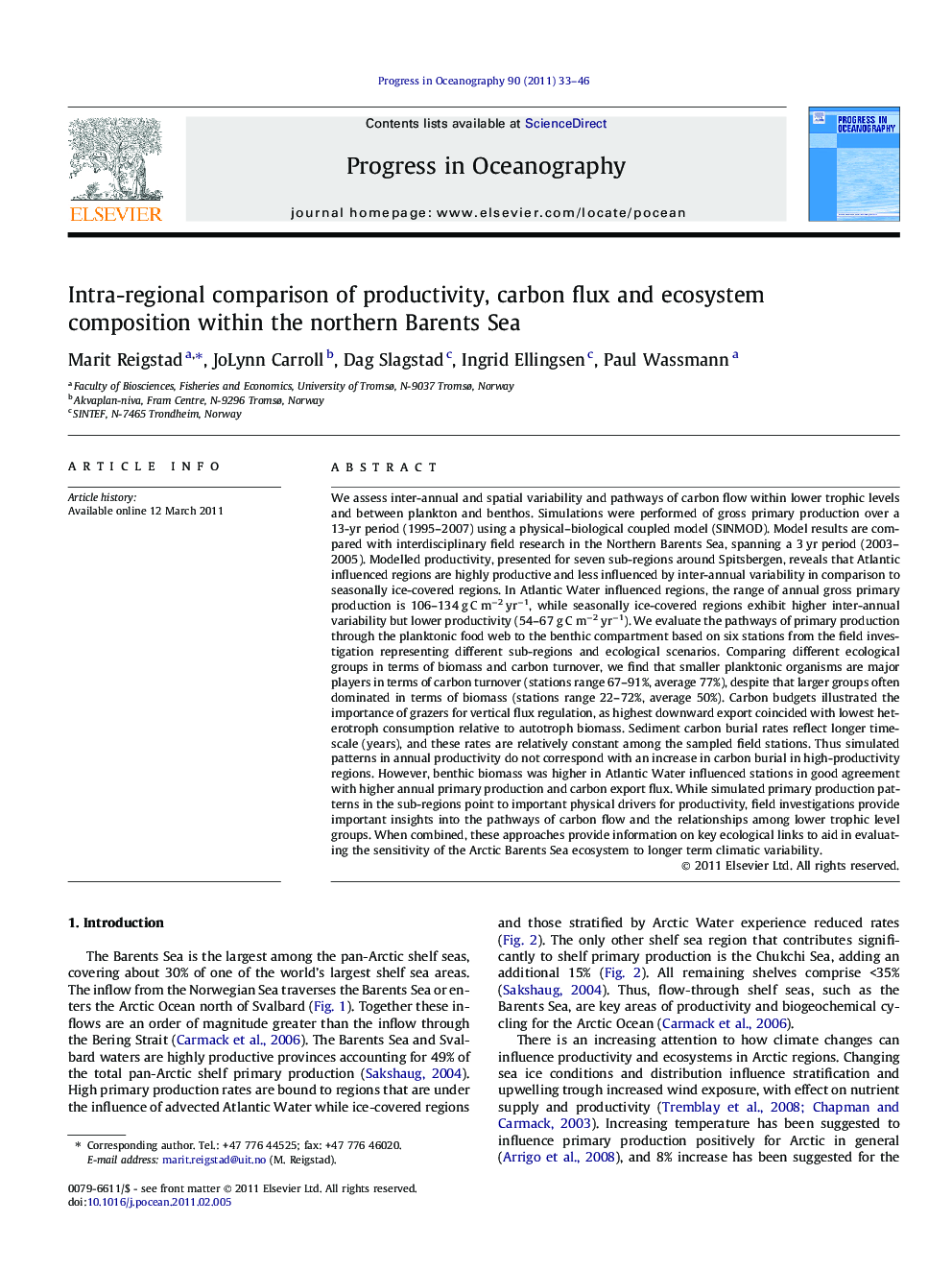| کد مقاله | کد نشریه | سال انتشار | مقاله انگلیسی | نسخه تمام متن |
|---|---|---|---|---|
| 4553366 | 1627955 | 2011 | 14 صفحه PDF | دانلود رایگان |

We assess inter-annual and spatial variability and pathways of carbon flow within lower trophic levels and between plankton and benthos. Simulations were performed of gross primary production over a 13-yr period (1995–2007) using a physical–biological coupled model (SINMOD). Model results are compared with interdisciplinary field research in the Northern Barents Sea, spanning a 3 yr period (2003–2005). Modelled productivity, presented for seven sub-regions around Spitsbergen, reveals that Atlantic influenced regions are highly productive and less influenced by inter-annual variability in comparison to seasonally ice-covered regions. In Atlantic Water influenced regions, the range of annual gross primary production is 106–134 g C m−2 yr−1, while seasonally ice-covered regions exhibit higher inter-annual variability but lower productivity (54–67 g C m−2 yr−1). We evaluate the pathways of primary production through the planktonic food web to the benthic compartment based on six stations from the field investigation representing different sub-regions and ecological scenarios. Comparing different ecological groups in terms of biomass and carbon turnover, we find that smaller planktonic organisms are major players in terms of carbon turnover (stations range 67–91%, average 77%), despite that larger groups often dominated in terms of biomass (stations range 22–72%, average 50%). Carbon budgets illustrated the importance of grazers for vertical flux regulation, as highest downward export coincided with lowest heterotroph consumption relative to autotroph biomass. Sediment carbon burial rates reflect longer time-scale (years), and these rates are relatively constant among the sampled field stations. Thus simulated patterns in annual productivity do not correspond with an increase in carbon burial in high-productivity regions. However, benthic biomass was higher in Atlantic Water influenced stations in good agreement with higher annual primary production and carbon export flux. While simulated primary production patterns in the sub-regions point to important physical drivers for productivity, field investigations provide important insights into the pathways of carbon flow and the relationships among lower trophic level groups. When combined, these approaches provide information on key ecological links to aid in evaluating the sensitivity of the Arctic Barents Sea ecosystem to longer term climatic variability.
Journal: Progress in Oceanography - Volume 90, Issues 1–4, July–September 2011, Pages 33–46